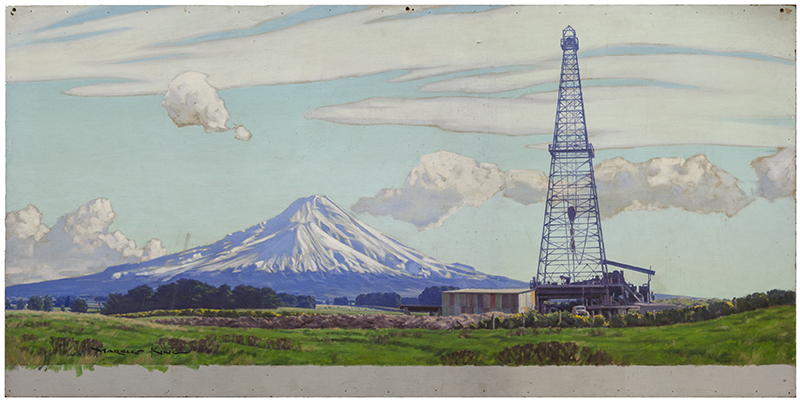
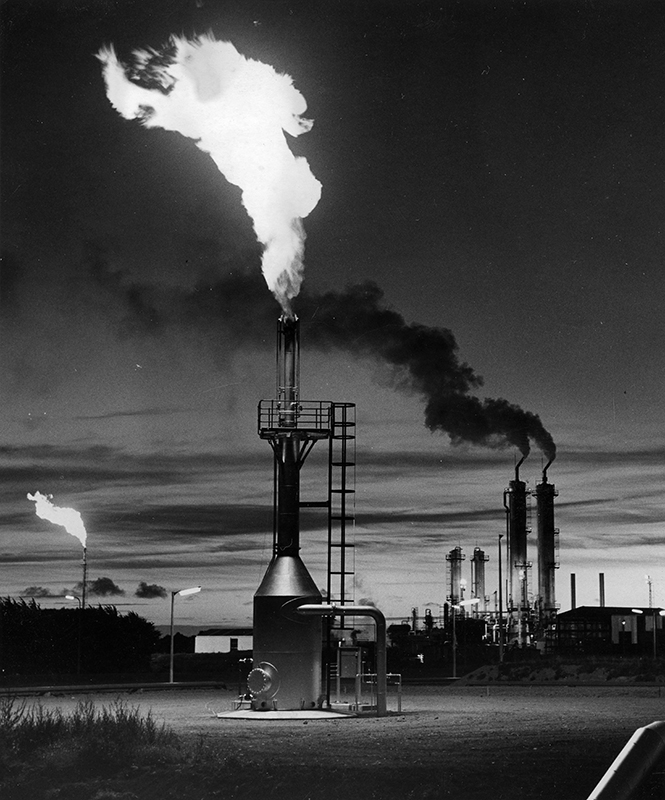
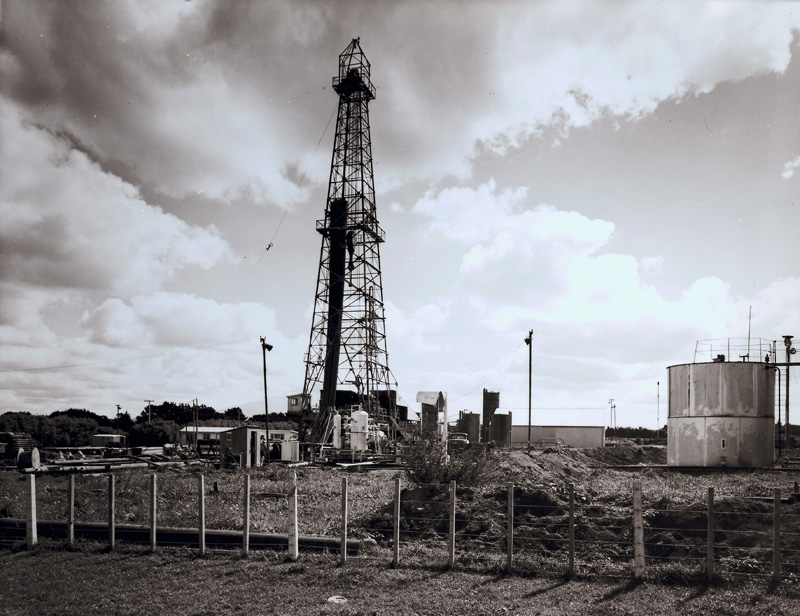
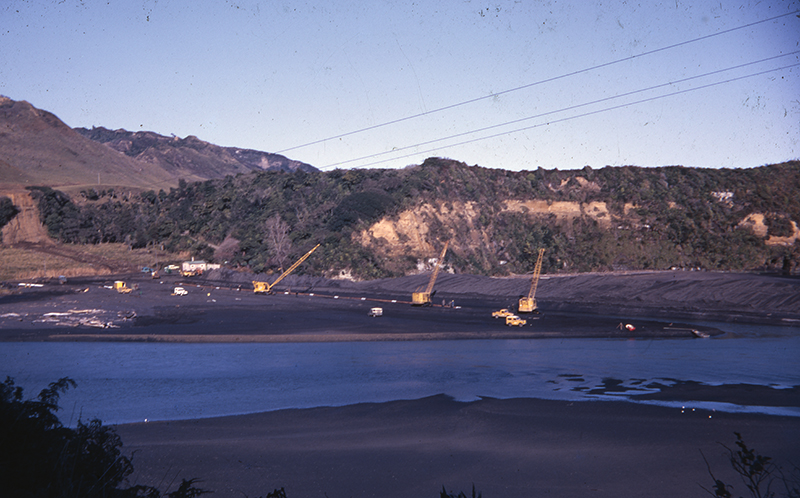
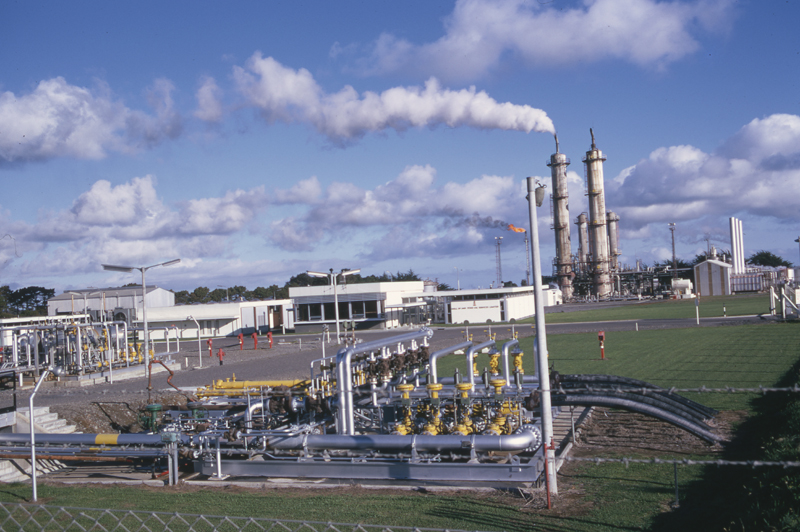
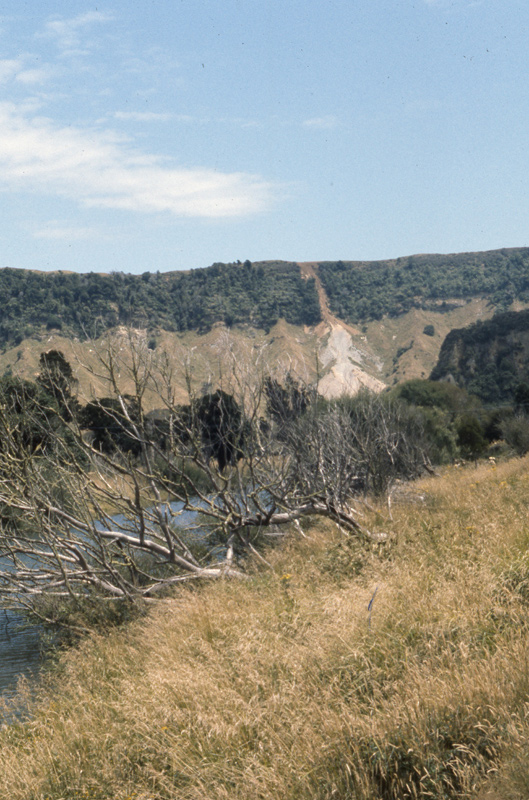
Early morning on a Sunday in 1959, a small piece of New Zealand history was born in a paddock lying in the shadows of Mount Taranaki. Under bright lights and the expectant eyes of the drillers the Kāpuni gas field was struck and the new ‘baby’ let out an unexpected wail. The cap rock was drilled through and a massive expansion of gas at the bottom of the well caused a blow-out, throwing mud high into the air.
"The mud column blew up through the derrick and rained down on us. It was horrible dirty smelly stuff," recalls George Cawsey, who was a roughneck (a labourer) during the Kāpuni 1 well drilling. "It was quite a dramatic moment...quite frightening... and then the blow-out preventer was shut in, and it calmed down."
Although gas had been expected, the pressure was higher than anticipated. "Back in those days there weren't many people who knew about pressure control in wells. The early wells were drilled by the Dutch, us Kiwi blokes didn't know anything. If we asked about it [pressure control] they told us 'You don't have to worry about that, sonny' ...with something as dramatic as a blow-out they couldn't hide the fact that they plain got it wrong!" laughs George.
Once the blow-out preventer shut in the consistency of the drilling mud was changed so it equalised the downward pressure in the hole, and things settled. New Zealand's first major hydrocarbon discovery was born. Taranaki was on its way to becoming the petrochemical heart of the nation.
But Kāpuni had been conceived many years before. In the early 1950s a group of companies got together to form Shell D'arcy Todd Oil Services to search for oil in New Zealand. The company later became Shell BP Todd. The group brought much-needed financial backing and the technological resources required in the search.
Seismic surveying was new technology in the 1950s. Before then oil exploration had been more miss than hit. The new equipment allowed surveyors to measure the reflections of shock waves off rock formations deep underground and assess the information to identify formations likely to hold petroleum.
In 1955 a seismic survey of Taranaki farmland began at Waitara, covering from Mount Messenger in the north to Maxwell in the south before circling Mount Taranaki. It was New Zealand's first extensive seismic survey.
George Cawsey had just started with Shell, the start of a long relationship with the company (apart from a ten year stretch overseas he was with Shell until he retired). His first job was with the survey crew, tramping from Waitara to Mount Messenger by the most direct route to mark a line for the seismic work. "Every bit of that I walked three or four times. I had to cut a track through hedgerows, manuka and gorse - you name it. Then I had to walk along the line and drive in a peg every 30 metres, then every 690 metres make an equilateral triangle that would become a shot point, where three wells were drilled down into solid rock usually about 30m to 60m deep."
Explosives were placed down the hole in the triangle and set off, this resulting shock waves, bouncing off the rock underground would be read by machinery at the peg points. George spent years tramping over the back-blocks of Taranaki with the survey crew.
It was near the end of the Taranaki survey that some exciting information was found. "When we started moving from Eltham to Ōpunake the survey showed we had found a sizeable underground hill. This generated quite a bit of interest among the surveyors, but we initially thought it was the toe of the mountain. We did some more seismic that confirmed the existence of a dome - an underground hill if you like."
The data received from the Taranaki survey was sent to be processed by a computer at the Royal Dutch Shell headquarters at The Hague in The Netherlands. A promising area was discovered near Kāpuni township and a ‘wildcat’ (exploration well) named Kāpuni 1 was drilled just off Palmer Road. "They brought the first big oil drilling rig into the country from Brunei. It was an Ideal-100. We rigged it up just like a meccanno set," George recalls.
By 1959 the Kāpuni 1 well was down 3912 metres when they encountered high pressure gas. Initial flow rates of the well were up to 55,770 cubic metres of gas a day with 262 barrels of light oil. In eight hours the well produced enough to meet New Zealand's natural gas needs for a day. Three more wells were drilled to help assess the size of the field, eventually confirming it was commercially viable. It was estimated the field would have a life of around 25 years.
The condensate/light oil was extracted from the gas and sent to a newly built tank farm at Paritutū near Port Taranaki. It was then shipped up to the Marsden Point Refinery.
Although Kāpuni was not a crude oil field it was large enough to supply gas to several big power stations or large cities. But there was no way to get the gas to the key markets and Shell BP Todd baulked at the cost of building such an infrastructure. It made plans to build a power station on the gas field. The Government stepped in and agreed to establish the Natural Gas Corporation and to buy, trade and transfer the gas to consumers.
Kāpuni gas had a high content of carbon dioxide (45%) so a production plant was built to remove it and LPG from the gas before it entered the pipeline.
In world-terms the 20 centimetre wide high pressure pipeline carrying the gas was a baby. But to get it the 600 kilometres from Kāpuni up to Auckland and down to Wellington was a big undertaking - even on a global scale. Before work could begin on the ground surveyors had to take to the air. Aerial photographs of the most direct route were taken, before ground surveying began.
The route for the pipeline marched across the map in as straight a line as possible - any deviations would cost money! Lateral thinking was called for, as surveyors on the ground met obstacles from power lines through to roads, rivers, farm sheds, houses and rough terrain.
At last a 13 metre-wide track was agreed on. The pipeline passed through 30 counties and over the land of 1000 farmers. Compensation was paid to those who would be affected by the pipeline work.
A track was cleared along the route. The pipeline laying began with two separate crews, each with around 180 men, working on trench diggers, banding machines, pipe-liners, welders, bulldozers and trucks. Work progressed at a rate of two to three kilometres a day on easy ground, but was often stalled on rougher contours.
Pipeline camps were set up and followed the men as they progressed along the route, feeding and housing them. An archaeologist accompanied the crews, investigating burial grounds and other areas of historical interest that were dug up.
The finished pipeline rose nearly 500 metres to Wellington's Paekākāriki, clawed its way along the hilltops of the White Cliffs and Mount Messenger and dived under the snaking Awakino River eight times.
Production began at Kāpuni in 1969, 10 years after the first discovery of gas, with four wells and a main production plant.
A year later the pipeline opened. Within two months 51,000 customers had signed up to natural gas. Many of these were domestic users who could now hook into low-cost instant heat for cooking and warming. Increasing demand soon resulted in the need for Kāpuni to expand and what was known as the Kāpuni Acceleration Programme began.
The discovery of the large offshore Maui Field in 1969 and its subsequent introduction to the market in 1979 saw it take over part of the job of supplying gas to the nation. A total of 14 wells were to be drilled on the Maui A platform.
By the early 1980s ten more wells had been drilled at Kāpuni allowing the producers flexibility. George Cawsey, then a drilling superintendent, drilled the 5760 metre Kāpuni 13 well in 1983, at the time the deepest well in the Southern Hemisphere.
Gas recycling was introduced at Kāpuni. The process involved taking the gas out of the ground, extracting the condensate (light oil) and pumping it back into the ground. Once underground the gas would go back into the formations and travel through the rock, picking up further condensate on its way. This could again be extracted off.
In 1982 Natural Gas Corporation's sister company Petrochem set up a plant next-door at Kāpuni to use the natural gas and catalysts to fix nitrogen in the air to make ammonium gas. The gas was then converted into granular urea for use as fertiliser.
The Auckland/Wellington pipeline was lengthened to include Gisborne, Tauranga, Hawke's Bay and later, Whāngārei. In 1986 a 56 kilometre-long pipeline was built between Kāpuni and Motunui, near Waitara in North Taranaki. Gas was supplied to Synfuel's gas-to gasoline plant.
Kāpuni 14 was drilled in 1987 and in 1991 Kāpuni 15 was the last well George Cawsey drilled in the Kāpuni field. He went on to drill a further eight wells on the Maui B platform in 1993-1994 before retiring in 1996. That year BP decided to stop exploration and production in New Zealand, and sold its share to the other two partners. In 2003 Kāpuni 16 was drilled.
Kāpuni gas field has a number of wells still in operation. It has outlived its life expectation and is still the second largest condensate field in New Zealand after Māui.
Kāpuni has seen a lot of firsts: it was found in the first modern oil exploration programme in New Zealand, it was the first gas field to be commercially developed in New Zealand and it had the first major direct government involvement in the petrochemical industry. It was the birth of the nation's petrochemical industry and heralded Taranaki's position as the petrochemical heart of New Zealand.
Ministry of Works (1968). Kāpuni Pipeline Project. Wellington: RE Owen Government Printer.
Ministry of Works (1970). Pipeline from Kāpuni. Wellington: RE Owen Government Printer.
Please do not reproduce these images without permission from Puke Ariki.
Contact us for more information or you can order images online here.